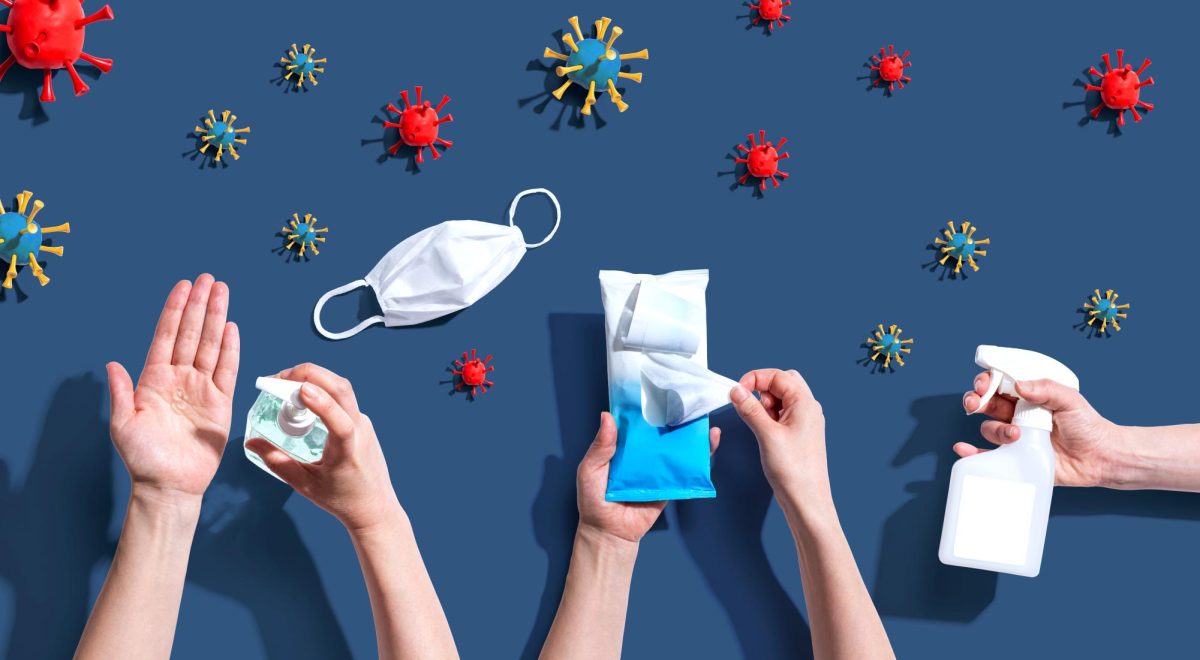As winter begins to make way for spring, there is one thing to forward to: the sun. From taking a nice walk to class, to relaxing in the quad, to outdoor sports practices and games, many find a reason to be outside and soak in the sun.

These rays, however, can be very harmful if one is not properly prepared. According to the American Academy of Dermatology Association, dermatologists recommend sunscreen be applied not just during the summer, but any time one plans on going outside. Sun rays reflected off of water and snow can be just as harmful as those on the beach. Even in the midst of a cloudy day or in the middle of fog, rays can still penetrate. Contrary to popular belief, everyone can be affected by the sun’s rays at any time.
These rays from the sun are classified as ultraviolet or (UV) rays. This means that they are invisible to the naked eye, in contrast to the light rays that make the many colors of the world visible. There are three different types of UV rays: UVC, UVB and UVA rays. UVC rays are not a threat as they get filtered out by the ozone layer and never reach earth’s surface. UVA rays are present during the day and are responsible for premature aging and wrinkling of the skin. While UVB rays are active and potentially harmful all year round, they are at their peak from 10 a.m.- 4 p.m. from April to October. These rays hold the most responsibility for damaging the skin and a leading cause of skin cancer.

Melanoma is the most dangerous type of skin cancer and the leading cause of death among skin diseases. Most affected are those with fair skin, blue or green eyes and red or blonde hair. The most common causes of melanoma are the use of tanning beds, long-term exposure to high levels of sunlight due to occupation or activity, living in sunny climates or at high altitudes and having experienced one or more blistering sunburns as a child.
Nick Flowers, a former Stevenson University football player, passed away from sun-related melanoma in November, 2016, when he was 24. The following year, Stevenson University honored Flowers by installing five sunscreen dispensers in Mustang Stadium, for use by fans and athletes alike.
Websites like www.skincancer.org offer detailed information on the effects of the sun on skin and how to best prevent damage. Some of the biggest mistakes people make when it comes to skin care involve sun screen. The biggest mistake of all is not wearing any. Since UVB rays cannot be seen by the human eye, people associate the presence of the sun with risk of sunburn and feel they are safe during cloudy or overcast days. This is false, and potentially dangerous.
Sunscreen should be applied at least 20 minutes before actually going outside because it takes approximately 15 minutes for the skin to absorb it. It is especially important to apply it to areas on the body that will be exposed; for example, an outdoor athlete would want to apply sunscreen anywhere on his or her body that will not be covered by equipment.
Another tip to beat the sun is to apply sunscreen more than once throughout the day. Dermatologists recommend reapplying sunscreen every two hours for continued protection, especially after swimming or sweating. Be sure to check the dates on sunscreen bottles from prior years. If the product is old or expired, chemicals in the sunscreen can potentially be weaker and provide less protection than one thought. When purchasing sunscreens, look for one with a sun protection factor or (SPF) of at least 30 if not more.
If skin protection is something you want to learn more about, www.aad.org and others have compiled information from professionals for the public. Just as the rays from the sun are can be invisible to the eye, the same is true for the risk factor.



























































